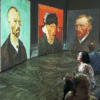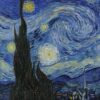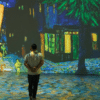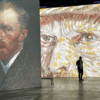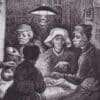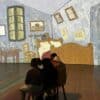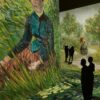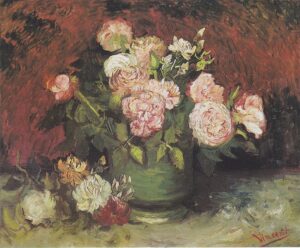
Van Gogh’s Yellow House: From Creative Vision to Personal Collapse

Source: Wikimedia Commons
“The Yellow House” is one of Vincent Van Gogh’s most famous paintings, symbolizing both a dream and a tragic chapter in his life. This house was not just a place to live; it was a symbol of Van Gogh’s hopes to create a thriving community of artists, a dream that ultimately fell apart and contributed to the decline in his mental health.
The Vision of an Artists’ Community
In 1888, Vincent Van Gogh moved to Arles, a small town in the south of France, where he rented a four-room house that would become known as the Yellow House. Van Gogh’s Yellow House was intended to be more than just his residence; he envisioned it as the hub of an artists’ colony, where like-minded painters could live, work, and inspire one another. Van Gogh invited his friend and fellow artist, Paul Gauguin, to join him in this creative experiment, hoping to foster a collaborative environment where they could push the boundaries of their art.
The Arrival of Paul Gauguin
In October 1888, Paul Gauguin arrived in Arles to stay with Van Gogh in the Yellow House. The setting of Van Gogh’s “The Yellow House” was meant to be a place of mutual inspiration, but tensions quickly surfaced. Van Gogh, with his intense personality and passionate work ethic, clashed with Gauguin’s more independent and sometimes dismissive attitude. Despite these tensions, the time they spent together resulted in some of their most significant works, including Van Gogh’s “Sunflowers” series, which he painted to decorate Gauguin’s room in the Yellow House.
The Collapse of the Dream
As the weeks passed, the relationship between Van Gogh and Gauguin deteriorated. The Yellow House, once a symbol of Van Gogh’s dreams, became the setting for increasing conflict. The dream of a harmonious artists’ community quickly unraveled, culminating in a dramatic incident that would mark the beginning of Van Gogh’s decline. In December 1888, after a heated argument with Gauguin, Van Gogh famously cut off part of his own ear. This event not only signaled the end of their partnership but also marked a significant decline in Van Gogh’s mental health.
The Aftermath and Van Gogh’s Decline
After the incident, Gauguin left Arles, and the artists’ community Van Gogh had dreamed of fell apart. Van Gogh’s mental health continued to deteriorate, and he was soon hospitalized in Saint-Paul-de-Mausole, a psychiatric institution in nearby Saint-Rémy. The Yellow House, which once symbolized his aspirations, stood as a lonely monument to his broken dreams.
Today, the location of Van Gogh’s “Yellow House” holds a special place in art history. Although the house itself was destroyed during World War II, the site remains a pilgrimage spot for those who admire Van Gogh’s work. “The Yellow House” by Van Gogh remains one of his most famous paintings, capturing not just a building but a chapter in his life filled with hope, creativity, and ultimately, tragedy.
Explore Van Gogh’s World Like Never Before
Experience the life and works of Vincent Van Gogh in an immersive, multi-sensory exhibit at the Beyond Van Gogh immersive experience. Walk through the vibrant colors and emotional landscapes that defined Van Gogh’s art and delve deeper into the stories behind his most iconic paintings, including “The Yellow House”. Don’t miss this unique opportunity to connect with the genius of Van Gogh in a whole new way.
Sources:
- Van Gogh Museum: vangoghmuseum.nl
- National Gallery of Art: nga.gov
- Art Institute of Chicago: artic.edu
- Stanford University: stanford.edu
- The Van Gogh Gallery: vangoghgallery.com
Get the first impression
Sign up for our newsletter and be the first to know about announcements in your area.





